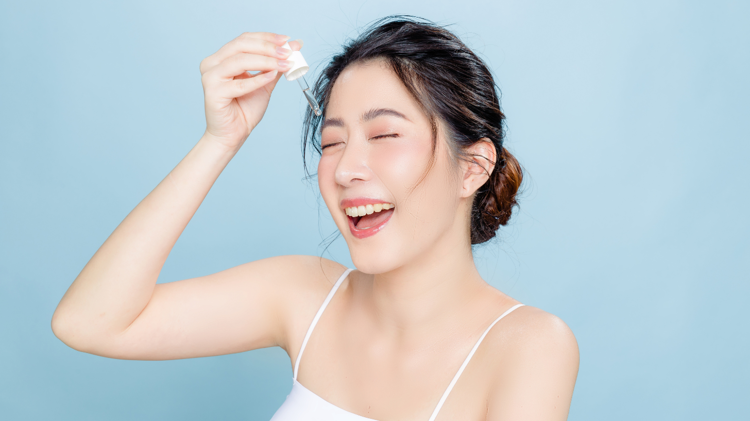Japanese vs Korean skincare routine
How Do Japanese vs Korean Skincare Routine Differ?
4
How Do Japanese vs Korean Skincare Routine Differ?
Where healthy, glowing complexions are involved, the beauty industry tends to look to the east — and most particularly to the tried-and-tested approaches of Japanese and Korean skincare regimen. From Japan's cool calm minimalism or Korea's revolutionary layering, both skincare cultures have gained international reputations for doing what they promise. But what exactly makes them so special? In this article, we are highlighting the main difference of the Japanese vs Korean skincare routine, highlighting their own special strengths, and pointing you in the right direction for your own skin.

The Japanese vs Korean skincare routine varies mainly on the beauty philosophy supporting them. Even though both deal with long-term skin health and prevention, Korean skincare favors innovation, layering, and moisture, whereas Japanese skincare favors minimalism, heritage, and cleanness.
Skincare Philosophy
The Korean skin care regimen promotes layering several light products to deeply moisturize and address particular skin concerns. It's dynamic, trend-based, and ever-changing — adding new ingredients such as snail mucin, fermented rice water, and propolis.
By contrast, the Japanese skin care routine honors traditional practices and a philosophy of minimalism. It is a process of synchronization with your own skin's normal process of regeneration and keeping in balance and strengthening the skin barrier. It's all about japan skins — smooth, soft, and strong with fewer interventions.
Routine Structure
Korean daily routine can consist of 10 or more steps: oil cleanser, foam cleanser, toner, essence, serum, emulsion, cream, eye cream, sleeping mask, and sunscreen. In this way, every skin problem will be well taken care of.
In contrast, Japanese routine consists of fewer simple steps: oil cleansing, foaming cleanser, lotion (hydrating toner), serum (optional), moisturizer, and sunscreen. The idea here is more with less using more potent, high-grade products.
Product Texture and Formulation
Korean skin care is renowned for its groundbreaking textures — gel-like serums, water-like toners, creamy clouds — and trend-setting formulas. The Korean skin care system is often paired with functional products that are also double-duty bases for makeup or tone-correctors.
Japanese skin care products emphasize high performance and minimalist design. Silky cleansing oils, soothing lotions, all light textures and thoughtfully chosen ingredients. Traditional ingredients such as rice bran, green tea, and algae, which are centuries-old ingredients of Japanese beauty regimens, find their way into Japanese skin products.
Cleansing: A Double Duty Start
Cleansing is where it all starts in skincare regimes. The Koreans' double cleansing ritual begins with an oil cleanser to break down makeup and sunscreen and then follows up with a foam cleanser to sweep away all remaining impurities.
The Japanese double cleanse isn't so different, though reduced friction and maximum comfort is best. Japanese cleansers in skincare make a light, calming foam that sweeps the dirt off your skin without pulling the moisture from your skin. Hada Labo and DHC are merely two of the famous brands well known for creating comforting yet highly effective cleansing products — some of the world's finest Japanese beauty products.
Hydration and Layering
Both systems are founded on hydration but with a variation in how it is delivered. The Korean system employs toners, essences, and ampoules for layering up moisture and treating issues such as dullness, dehydration, and wrinkles. All of these are watery formulations and are made to be put on in a certain order so they can be tailored.
In the Japanese regimen, hydration is provided primarily in the form of "lotion," a watery, lightweight moisturizer applied before thicker creams. They are particularly preferred in humid weather, hence Japanese skin care products are increasingly popular in India. Their quick absorption makes them perfect for oily or combination skin.
Treatments and Targeted Products
Korean skin care treatments usually include several treatments simultaneously: brightening ampoules, anti-wrinkling serums, blemish control creams, and the like. It is normally used according to your daily condition of skin.
Japanese skin care, however, is all about quality and not quantity. A single, well-formulated serum or emulsion can produce dramatic differences over time. Japanese beauty products are fragrance-free, non-irritating, and gentle to sensitive skin — a first choice for reactive or acne skin.
Moisturizers and Creams
The Korean regimen employs layering even on moisturizers — light emulsions to rich creams and sleeping packs that encase it all. It suits dry skin or when the skin needs that extra dose of moisturizing.
Moisturizing is simpler in the Japanese skin care routine. A mild cream or gel should be okay, particularly if it follows a moisturizing lotion. The most useful Japanese skin care products are formulated to disrupt oil and water content balances, and they get the job done without being too much.
Sunscreen: The Gold Standard
Both rituals finish with sunblock — and both Japan and Korea make among the finest on the planet. Korean sunblocks are light, contain brighteners or anti-ageing ingredients, and are blissful over foundation.
Japanese sunblocks excel with water-resistance, quick drying, and slip, non-greasy feel. Biore, Shiseido, and Aritaum have consistently been included among the very best of Japanese cosmetic sunblocks by expert beauticians globally.
If you're ready to venture into Japanese skin care, the following Japanese skin care products are a great place to start:
Hada Labo: Famous for their hydrating lotions with hyaluronic acid.
DHC: Famous for their oil cleanser and minimalism.
SK-II: Luxury brand renowned for their Pitera essence — an iconic product.
Shiseido: Has a wide variety of best Japanese skin care products from day-to-day essentials to aging issues.
All of these products are now easier to access than ever before, with the majority of Japanese skincare in India easily found on beauty websites and specialist stores.

So, What Routine Should You Follow?
There is no cut-and-dry winner of the Japanese vs Korean skin care routine debate — it simply comes down to what you need:
If you want diversity, love trying new products, and have specific skin concerns that must be addressed, the Korean skin care regimen will suit you best.
If you prefer a tried-and-true, less-is-more philosophy that involves treating the skin gently and working with less product, the Japanese skin care routine will be your best bet.
Some beauty enthusiasts even mix and match the two: Korean treatment serums and Japanese moisturizers, and cleansers. Do what you like, the key is to be regular.
Conclusion: Pick What Suits You
Ultimately, whether you're doing the Korean skin care routine or the Japanese skin care routine, it is ultimately a matter of what your skin needs. Do you need a calming multi-step routine that treats some issues? Korean skincare is your destiny. Do you need a relaxed easy routine that's based on tried and tested age-old techniques? Then Japanese skincare is your tea.
Even better yet, most of us are happy with both — Japanese performance beauty products and Korean hydrating layers for a little extra glow. Whatever your choice ends up being either or both, adding either (both) will take your skin care to a whole new level.


